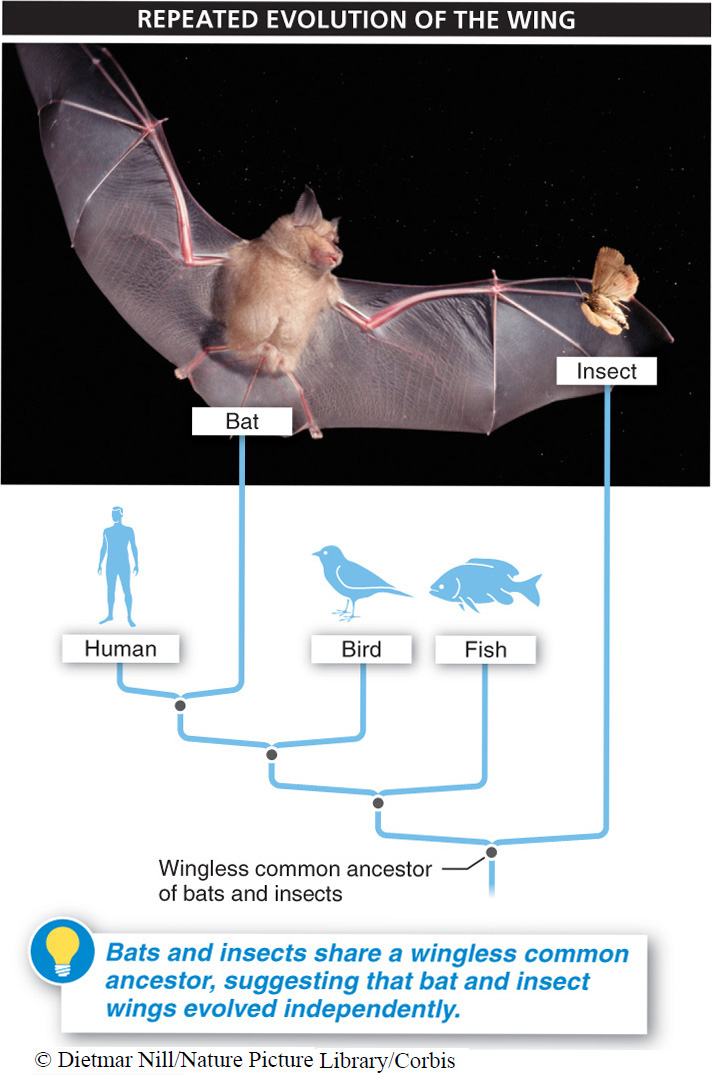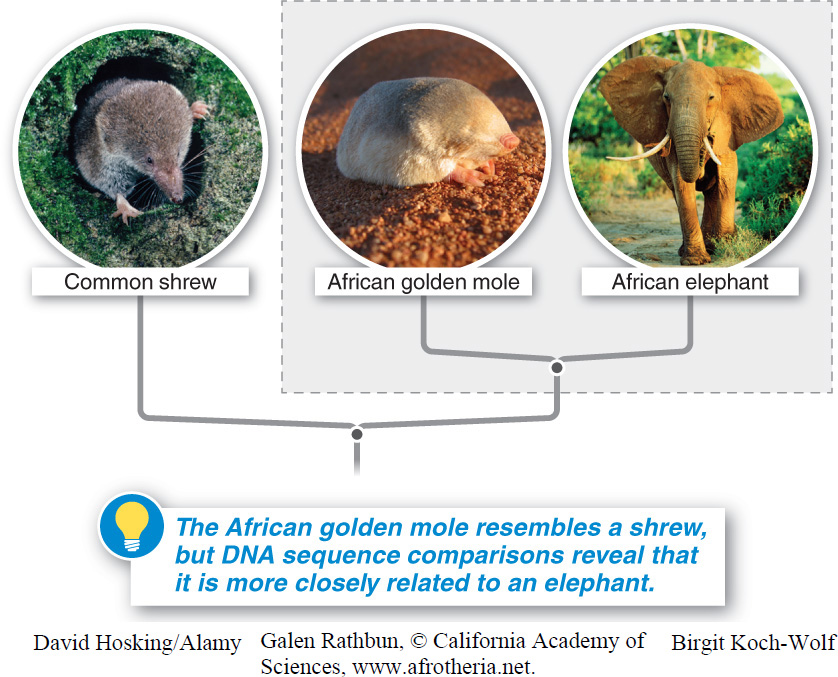10.10: Similar structures don’t always reveal common ancestry.
Whales and sharks have fins; bats and many insects have wings. Do bats have wings because they are most closely related to insects and inherited their wings from a common, winged ancestor, or did insects’ and bats’ wings evolve independently? As the evolutionary tree in FIGURE 10-19 makes clear, insects’ wings and bats’ wings evolved independently—

The mapping of species’ characteristics onto phylogenetic trees provides us with the story of evolution. Before the 1980s, biologists had tried to decode the process of evolution by comparing physical features of organisms. Then, with the advent of methods for comparing DNA sequences, tracing the history of life on earth became a more rigorous science. Let’s look at a case that illuminates why the original methods were weaker (FIGURE 10-20).

Initially, biologists thought that African golden moles belonged in the order known as insectivores, which includes shrews, hedgehogs, and other moles. This belief seemed reasonable because the moles have many characteristics in common with these other animals: they are small, they have long, narrow snouts, their eyes are tiny, and they live in underground burrows. Biologists thought that this group of characteristics evolved just once, and that all species in the insectivore order possessed these characteristics because they inherited them from a common ancestor.
Recent evidence from DNA sequencing, however, surprised everyone who studies these animals. The DNA evidence reveals that African golden moles are more closely related to elephants than to the insectivores, including all of the other mole species! Why do they look so similar to the insectivores? Because of a phenomenon called convergent evolution, which occurs when populations of different organisms live in similar environments and so experience similar selective forces. Analogous traits are characteristics (such as bat wings and insect wings) that are similar because they were produced by convergent evolution, not because they descended from a common structure in a shared ancestor. Features that are inherited from a common ancestor are called homologous features. All mammals have hair, for example, because they inherited this trait from a common ancestor.
Q
Question 10.4
Humans have several fused vertebrae at the bottom of their spinal cord that look like a tiny, internal “tail.” Are we evolving a tail or losing a tail?
425
Analogous features are problematic when biologists are constructing evolutionary trees, because they are the result of natural selection rather than relatedness. As a consequence, these traits should not be considered a sign of common ancestry when constructing an evolutionary tree. But how do we know whether traits are homologous or analogous? Through DNA analysis. DNA sequences do not become similar during convergent evolution, so molecular phylogenies cannot be fooled. This is an important reason why molecular-
Although analogous traits and the process of convergent evolution are not helpful in constructing evolutionary trees, that doesn’t mean they are useless to biologists. Far from it. Convergence provides some of the best evidence for the power of natural selection. For example, from the 19th to the 20th centuries in industrialized parts of Europe, a large number of distinct butterfly and moth species became darker and darker. This change was not the result of their sharing a common ancestor, but instead came about because industrialization had caused an accumulation of dark soot on the bark of many trees. This soot accumulation caused light-
TAKE-HOME MESSAGE 10.10
Evolutionary trees are best constructed by comparing organisms’ DNA sequences rather than physical similarities, because convergent evolution can cause distantly related organisms to appear closely related, but it doesn’t increase their DNA sequence similarity.
Which is a better indicator of a close evolutionary relationship: similarities in structure, or similarities in DNA sequences? Explain.
426